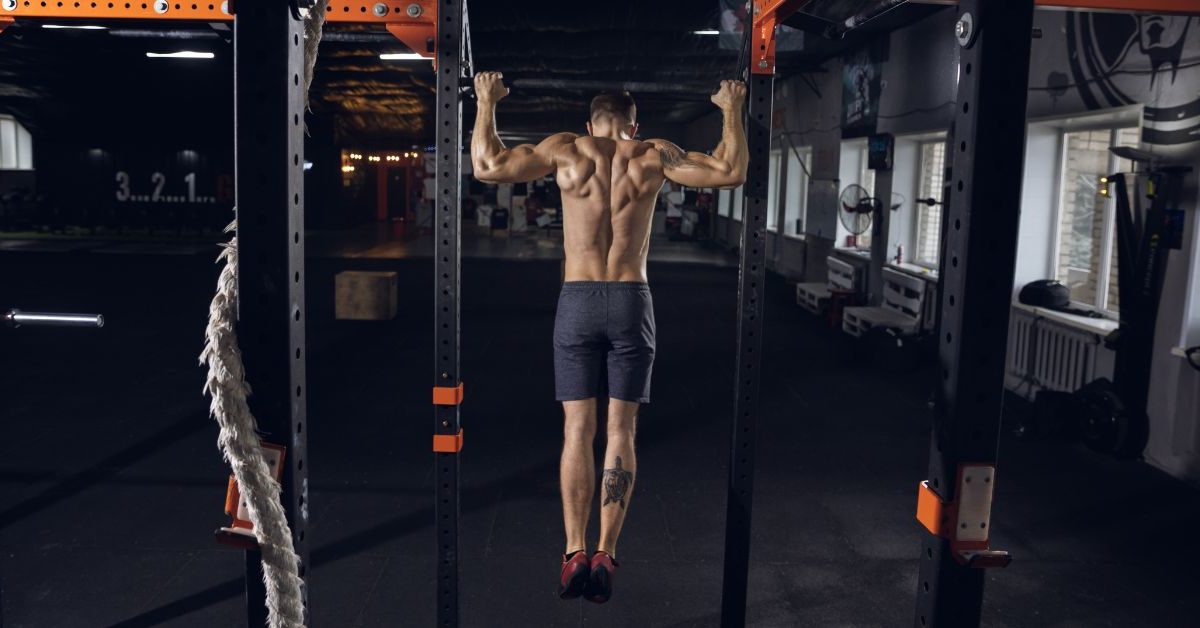
Dead Hang After Workout: Key Benefits for Strength & Recovery
After a rigorous workout, it’s crucial to focus on effective cool-down exercises to aid recovery and prevent injuries. One highly beneficial exercise is the dead hang after workout. This simple yet powerful exercise involves hanging from a bar, allowing your body to decompress and stretch. Incorporating dead hangs into your routine can offer numerous benefits, enhancing overall fitness.
In this blog post, we will explore the many benefits of performing dead hangs after a workout. The dead hang can help improve your grip strength and aid in muscle recovery. Also, we’ll provide tips on how to do dead hangs correctly, avoid common mistakes, and incorporate variations. Let’s get started.
What is a Dead Hang After Workout?
A dead hang is a simple yet effective exercise that involves hanging from a bar with straight arms and a relaxed body. This exercise primarily targets the upper body, including the shoulders, arms, and grip. It helps decompress your spine and stretch your muscles. To perform, grip the bar with hands shoulder-width apart.
Lift your feet off the ground and let your body hang. Keep your arms straight and shoulders relaxed. Start with 10-20 seconds and gradually increase the duration. This exercise aids in recovery and enhances grip strength.
Benefits of Dead Hangs After a Workout
Dead hang after workout has some potential benefits you should be aware of. Such as:
Improves Grip Strength
Dead hangs significantly enhance grip strength, essential for various exercises and daily tasks. A stronger grip improves performance in weightlifting, climbing, and carrying groceries. Regularly practicing dead hangs ensures your grip remains strong and resilient. This can also help prevent injuries related to weak grip strength. Overall, a strong grip is crucial for both fitness and daily activities.
Enhances Shoulder Mobility and Flexibility
Dead hangs improve shoulder mobility and flexibility. Hanging from a bar stretches the shoulder muscles and increases their range of motion. Enhanced flexibility helps prevent injuries during other exercises. Regular dead hangs can make movements smoother and more efficient. Improved shoulder mobility is beneficial for both athletic performance and everyday tasks.
Spinal Decompression
Dead hangs allow your spine to decompress, relieving pressure and reducing back pain. This exercise helps counteract the effects of sitting or standing all day. Decompressing your spine can alleviate discomfort and improve posture. It also reduces the risk of spinal injuries. Regular dead hangs ensure your spine remains healthy and flexible.
Increases Forearm and Hand Strength
Performing dead hangs strengthens your forearms and hands. This increased strength benefits many upper body exercises. Strong forearms and hands improve grip endurance and overall arm performance. Enhanced strength helps in daily activities, like lifting objects and opening jars. Regular dead hangs ensure your forearms and hands stay strong and resilient.
Aids in Muscle Recovery
Dead hangs promote muscle relaxation and recovery post-workout. Stretching your muscles and relieving tension helps reduce soreness. Improved recovery time allows you to return to workouts faster. Regular dead hangs enhance muscle recovery, making your fitness routine more effective. This ensures you stay consistent and achieve better results in your training.
How to Incorporate Dead Hang After Workout into Your Routine

Including dead hangs in your workout routine can greatly benefit your recovery and fitness. The following tips can help you incorporate this exercise into your routine effectively.
Ideal Timing
The best time to perform dead hangs is immediately after your workout. This allows your muscles to stretch and recover. Incorporating dead hangs into your cool-down routine ensures you reap the maximum benefits. It helps in relaxing your muscles after intense exercise sessions.
Frequency and Duration
Start with short durations, such as 10-20 seconds. Gradually increase the time as your grip strength improves. Aim to perform dead hangs 3-4 times per week. This frequency is enough to see noticeable improvements without overloading your muscles.
Integrating with Other Exercises
Combine dead hangs with other cool-down exercises like stretching and light cardio. This ensures a well-rounded recovery routine. Including dead hangs with various stretches can enhance overall flexibility and muscle relaxation. It helps in creating a balanced fitness regimen.
Progress Tracking
Use a timer to track your progress and gradually increase hang time. Keeping a record of your progress motivates you and shows improvement. Regularly challenge yourself to hang for longer durations. This helps in continuously building grip strength and endurance.
Common Mistakes to Avoid
You should avoid common mistakes when performing dead hangs to prevent injury or reduce effectiveness. Make sure you focus on proper form and listen to your body when exercising. Here are some mistakes to avoid.
Incorrect Grip and Body Positioning
One common mistake is using an incorrect grip or improper body positioning. Ensure your hands are shoulder-width apart and your grip is secure. Keep your arms straight and your shoulders relaxed. Avoid tensing your body or using a grip that feels uncomfortable or unstable.
Overdoing the Duration
Overdoing the duration of dead hangs can lead to strain and injury. Start with short durations, such as 10-20 seconds, and gradually increase the time as your strength improves. Pushing yourself too hard can cause muscle fatigue and decrease the effectiveness of the exercise.
Ignoring Pain or Discomfort
Ignoring pain or discomfort during dead hangs is a major mistake. Listen to your body and stop if you feel any sharp pain or significant discomfort. Pushing through pain can lead to injuries, which may set back your fitness progress.
Not Breathing Properly
Proper breathing is crucial during dead hangs. Many people hold their breath, which can increase tension and decrease performance. Focus on maintaining a steady breathing pattern. Inhale deeply through your nose and exhale through your mouth to stay relaxed and enhance the benefits of the exercise.
Who Should Avoid Dead Hangs After Workout?
If you have a shoulder injury, dead hangs may not be suitable for you. The pressure and strain on the shoulder joint could aggravate existing conditions. It’s important to consult with a healthcare professional before attempting dead hangs if you have a history of shoulder injuries.
Those with wrist or forearm pain should also avoid dead hangs. Hanging from a bar places stress on the wrists and forearms, which could worsen any pre-existing conditions. If you experience discomfort in these areas, consider alternative exercises to improve strength and mobility.
If you’re new to fitness or have not yet developed adequate grip strength, dead hangs might be too challenging. It’s crucial to build up strength gradually before attempting this exercise. Beginners should focus on other grip-strengthening exercises and consult with a fitness professional for proper progression.
FAQs
Should you dead hang after a workout?
Yes, dead hanging after a workout can be highly beneficial. It helps decompress your spine, reducing tension and aiding muscle recovery. Dead hangs also improve grip strength, shoulder flexibility, and forearm endurance.
Incorporating this exercise into your cool-down routine enhances overall recovery and reduces soreness. Just ensure you’re using proper form and not overdoing the duration to avoid strain or injury.
What is a good time for a dead hang?
A good time to start for a dead hang is 10-20 seconds per set. As you build grip strength and endurance, you can gradually increase the duration. Aim for 3-4 sets, with a rest period in between. For beginners, it’s important not to overdo it, as holding for too long can lead to fatigue or injury. Consistency is key, so focus on gradually increasing your hang time over several weeks.
Can I do dead hang every day?
Yes, you can do dead hangs every day, but it’s important to listen to your body. If you’re new to this exercise, start with 2-3 times per week to build strength gradually. Overdoing it daily may lead to muscle fatigue or strain, especially in the grip and shoulders.
Ensure you’re maintaining proper form and allow time for recovery if you experience any discomfort. Aim for balanced training, incorporating rest days for optimal results.
Read More: Can You Build Muscle on a Calorie Deficit?
Final Words
A dead hang after a workout can significantly improve grip strength, shoulder mobility, and muscle recovery. This simple exercise offers numerous benefits when performed correctly and consistently. Dead hangs are most effective when you avoid common mistakes and listen to your body. Add dead hangs to your cool-down routine to enhance flexibility and reduce soreness.



